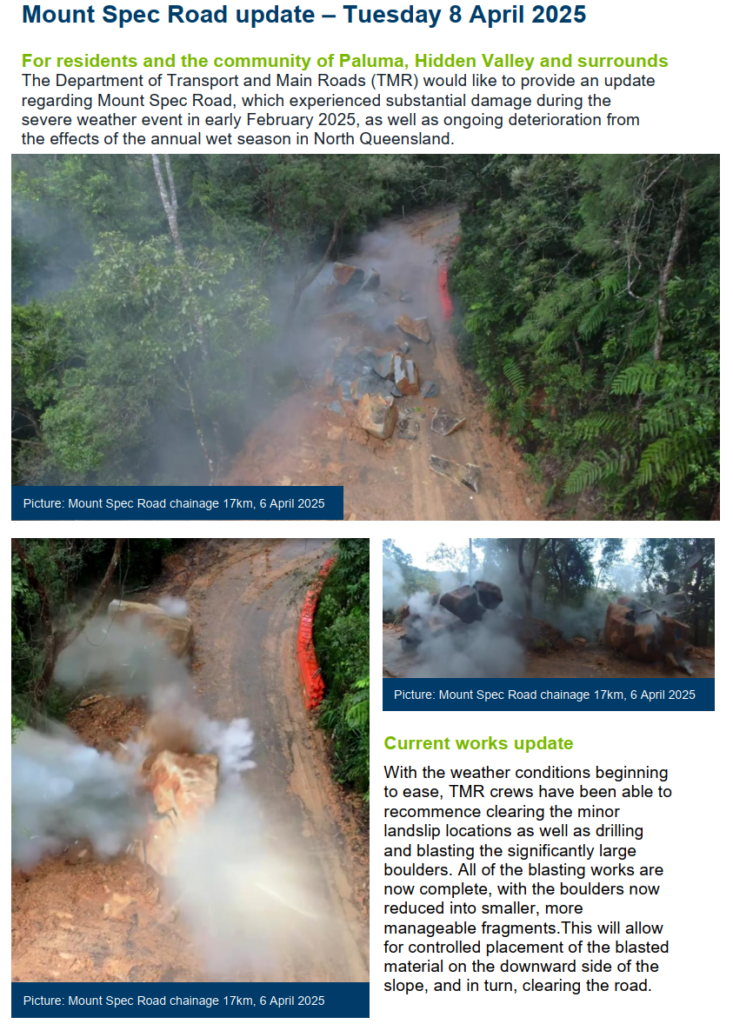
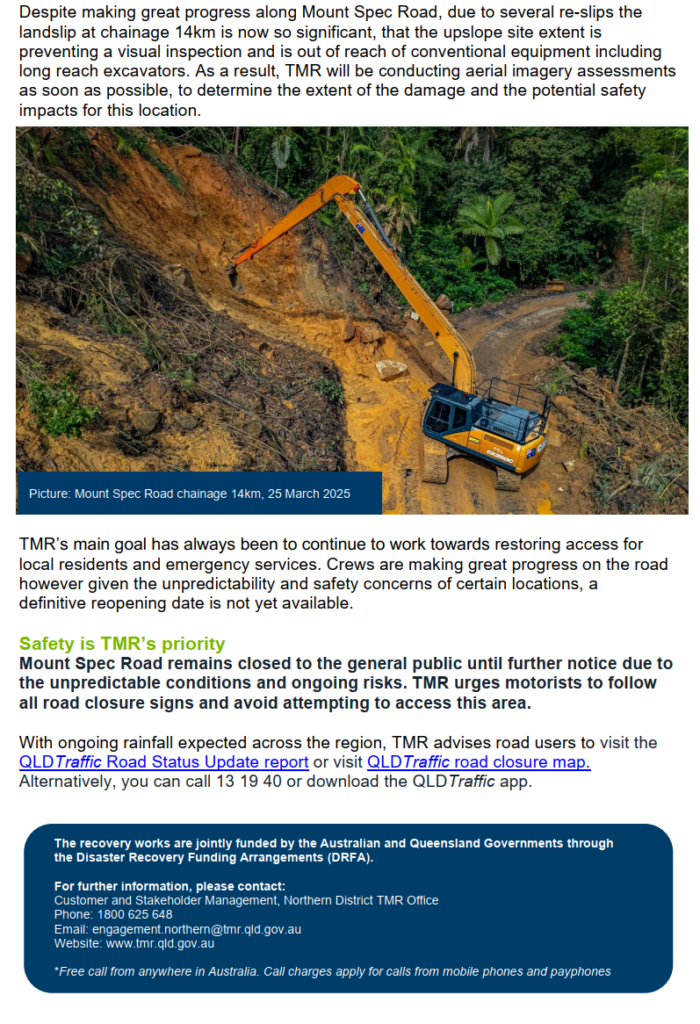


Prior to the meetings below the PDCA will provide a BBQ lunch at noon, April 12th at the Community Hall
A community meeting to review our experiences during & after the February extreme weather event will now be held on Saturday, 12th of April, commencing at 1 pm in the Paluma Community Hall. The objective is to record lessons learnt for the future, discuss known problems & see what we can do to improve how we manage such events. All members of the community are encouraged to attend. See agenda here.
If you are unable to attend but would like to have a specific issue included for discussion, feel free to contact Charlie Allen, Peter Cooke, Anneshka Brown or Jamie Oliver to let them know.
There will also be a regular meeting of the PDCA Council at 3pm, after the community meeting. This PDCA meeting will cover various ongoing items (see agenda below). While these meetings have traditionally been considered as business meetings attended only by the elected members of the Council/Executive, we welcome any residents to attend and to raise any items that they would like the PDCA to consider in addition to what is already on the agenda. Here is the proposed agenda.




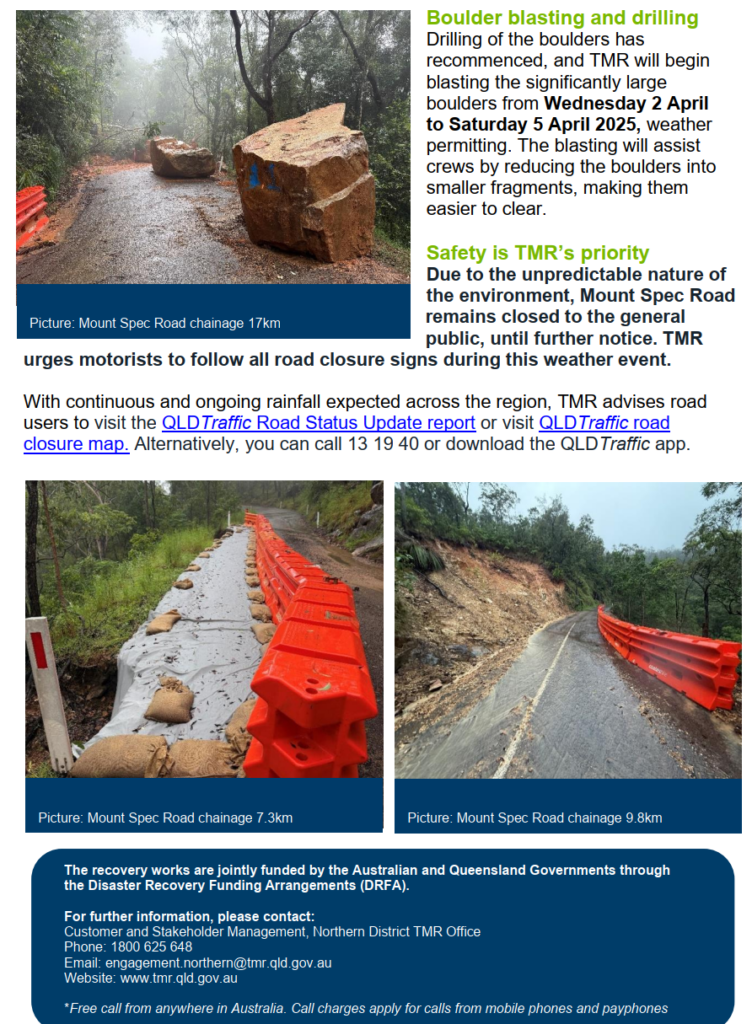
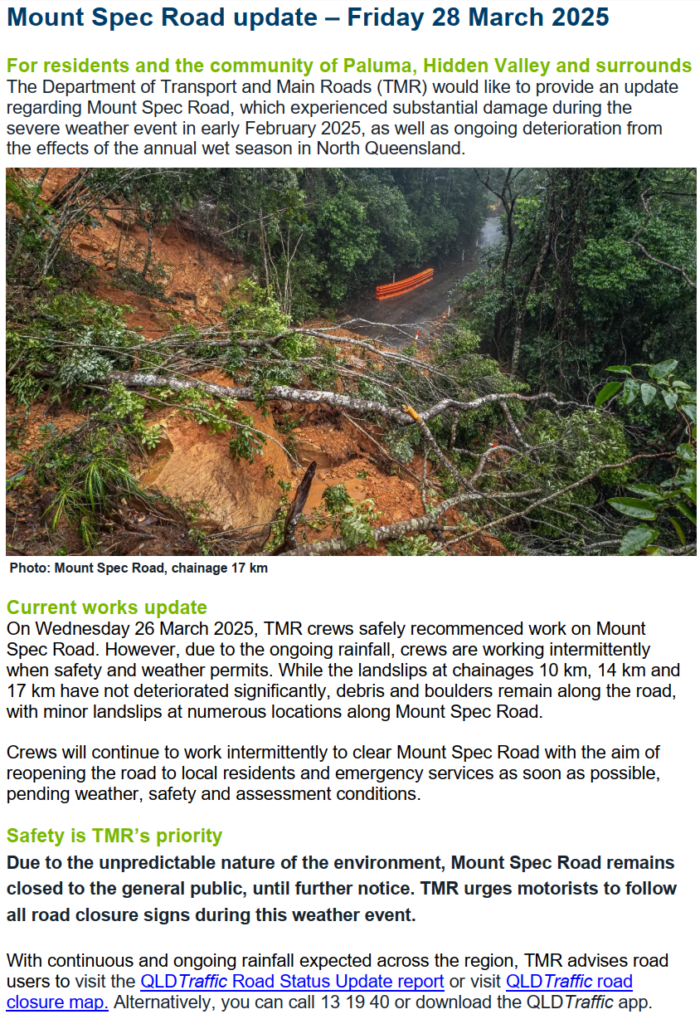
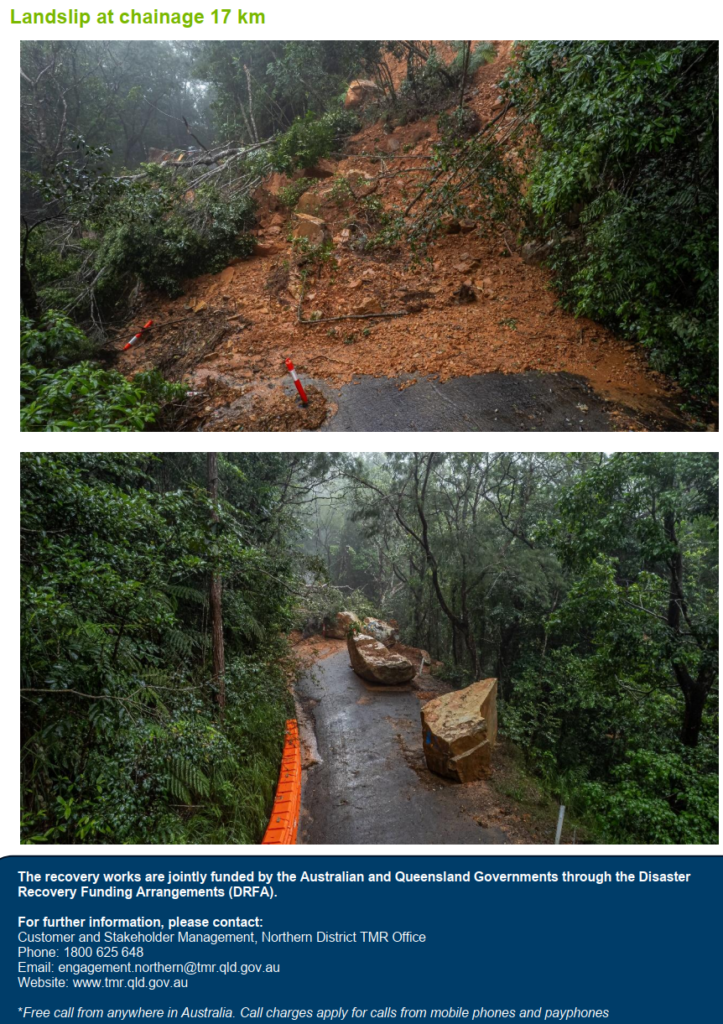
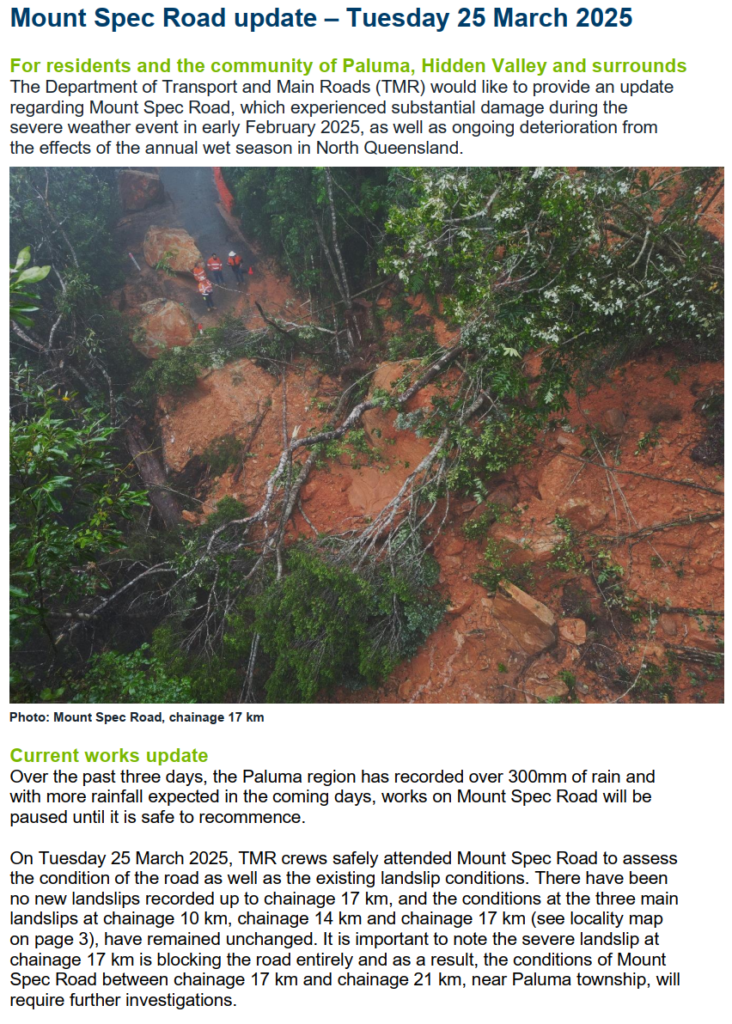
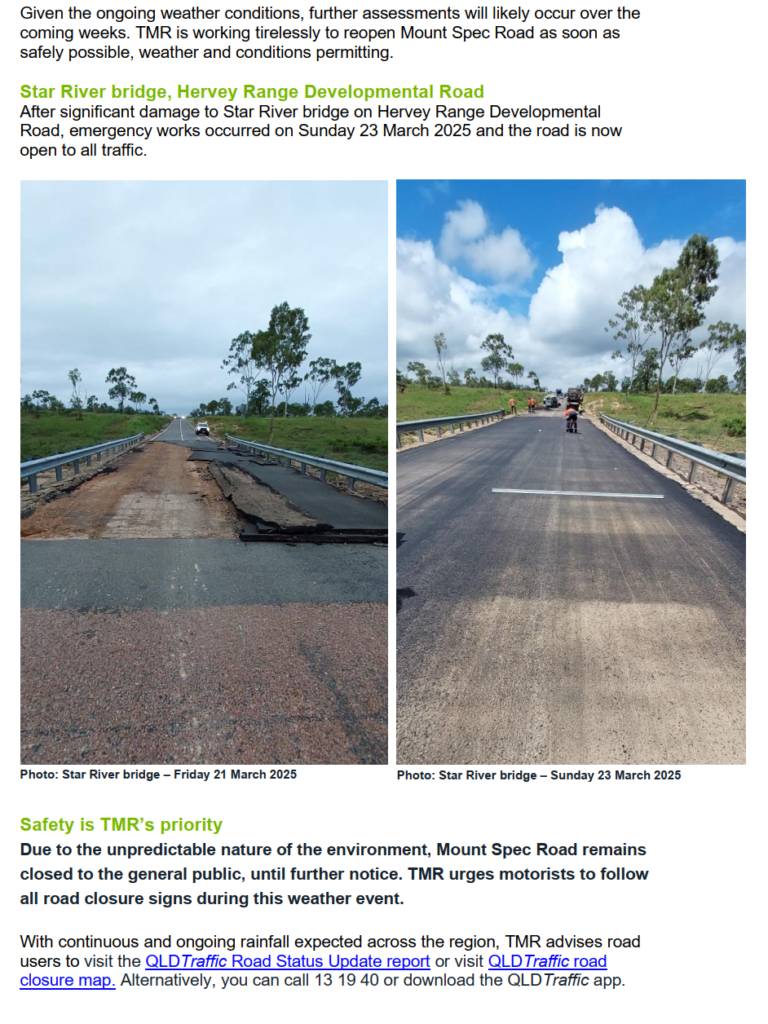
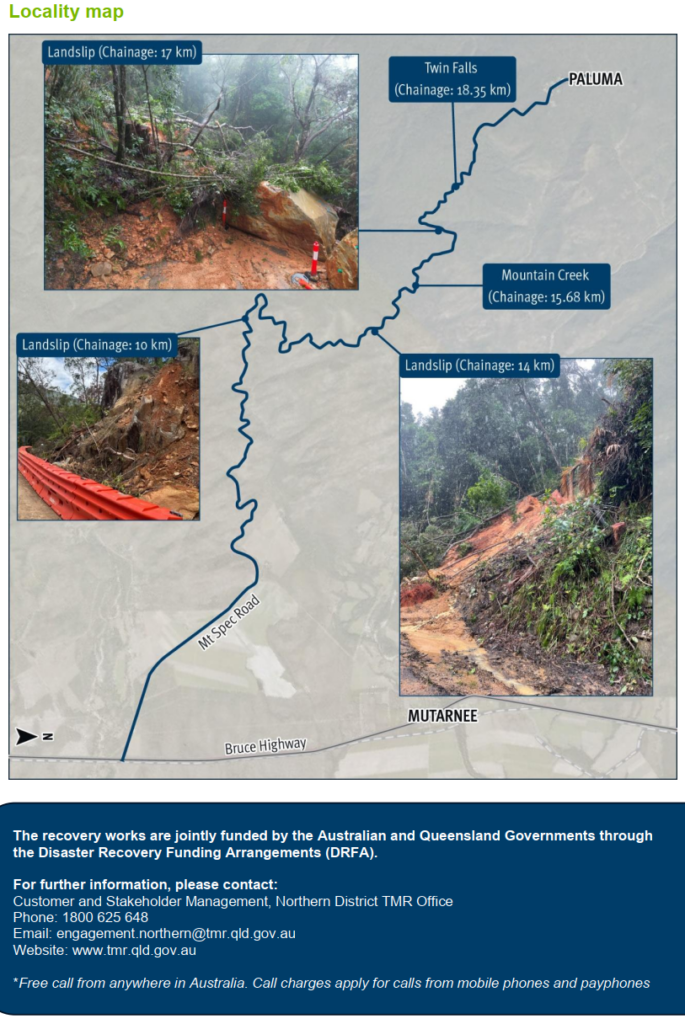




As mentioned in the last “Paluma in the Rain” update, we had a visit from the acting Mayor (Councillor Ann-Maree Greaney) and Zac Daws, Local Disaster Coordinator last Sunday. In preparation for the meeting, Peter Cooke wrote up a list of issues for discussion which included:
The mayor noted that many of these items were outside their immediate responsibility but undertook to pass our concerns on to the relevant authority, and to respond in writing to those issues it was in a position to act on.
The following response was sent to Charlie Allen and Ross Hyne on Monday.


The department of Main Roads is planning maintenance work on the range road in June through to August. Works will be conducted in the night from 6pm to 6am Saturday – Thursday, and 7pm to 6am on Fridays. This is the same schedule that was used during the last maintenance program. Individuals who commute up and down the range for work should have been contacted individually already. I you fall this this category please contact TMR as soon as possible. There will be no maintenance work during the Paluma Push.
Here is the relevant notice from TMR.
The Department of Transport and Main Roads (TMR) will soon commence stabilisation works on Mt Spec Road Slop between Fairy Falls and Maiden Hair Fern Creek.
These important works are required due to the deteriorating condition of the rock walls and will prevent failure of the rock walls along this important heritage listed road.
We are contacting you as a key local stakeholder to seek your feedback and understand any concerns you may have about the proposed timing or about these works from a local perspective.
Works will be occurring from:
Monday 17 June to Friday 30 August 2024
With a working roster of 10 days on 4 days off between 6pm – 6am
Friday night road closure will occur 7pm and reopen 6am Saturday.
The schedule is currently for a full road closure commencing at 6pm and reopening at 6am. Work crews will commence prestart works an hour prior to the road closure.
Please note, Mount Spec Road in its entirety will be closed during the night works, with provision for Queensland Emergency Services and parents who will be required to retrieve sick students only.
The night works will take place based on 10 working days and 4 days-off (10:4) roster for the duration of the slope stabilisation project. Each Friday night of the work schedule, the road will be closed at 7pm and reopen 6am Saturday morning.
Please find attached Notice of Works including a calendar with scheduled works specific to Mt Spec Road. Please note these may be subject to change due to weather conditions, contractor availability and construction progress.
We encourage you to please let us know of any community events that are occurring over the course of roadworks. Please find the current works calendar on page 2 of the attached document. Alternatively, you can call me on
1800 625 648 to discuss further.
I look forward to hearing from you.
Kind regards
Sarah
Communications Officer
Customer and Stakeholder Management Team – Northern District | North Queensland Region
Program Delivery and Operations Branch | Infrastructure Management and Delivery Division
Department of Transport and Main Roads
P: 1800 625 648| M: 0744218996
Floor 6 | 445 Flinders Street | Townsville Qld 4810
GPO Box 1089 | Townsville Qld 4810